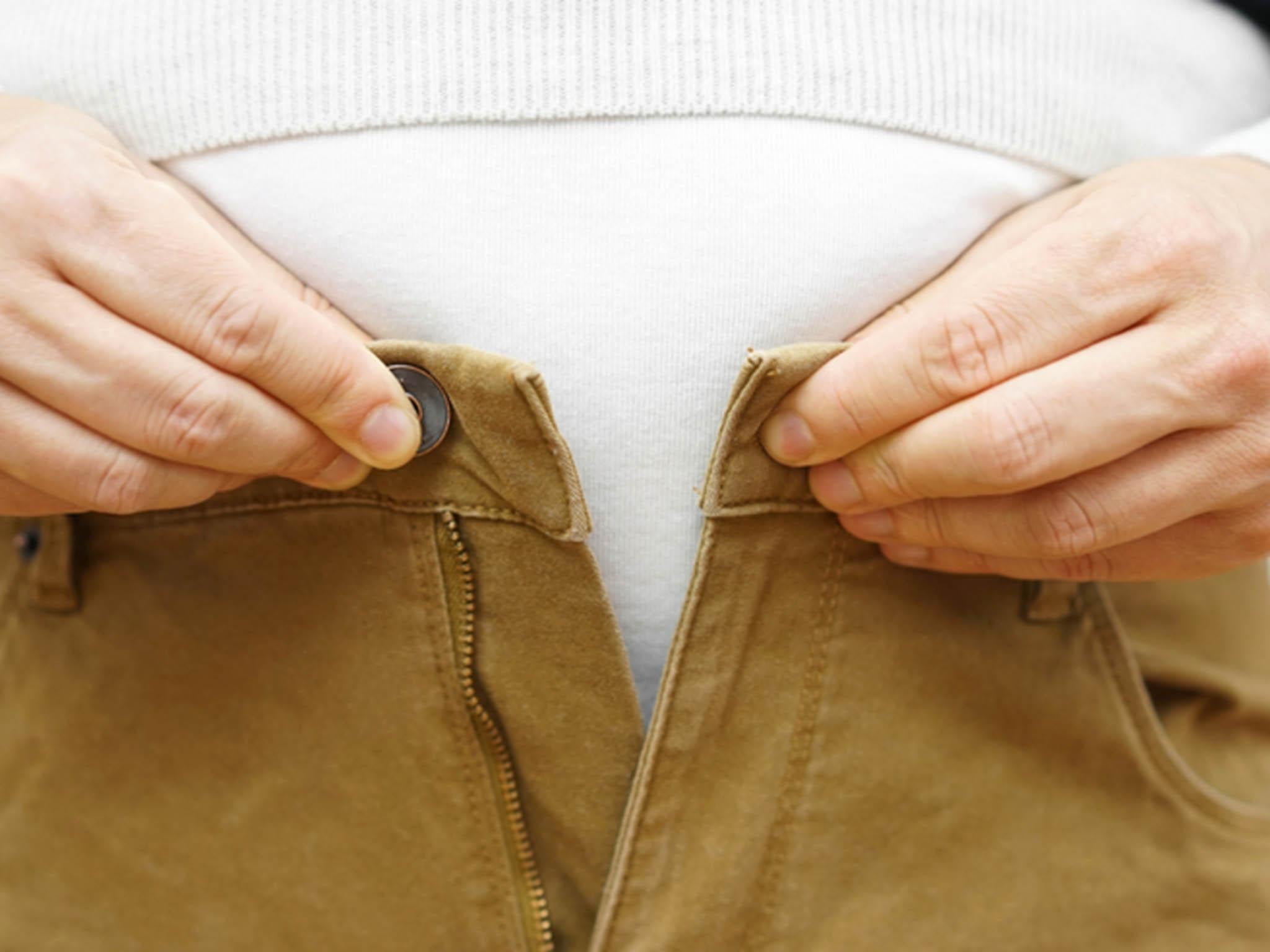Christmas stuffing: Here’s what happens to your body when you overeat
We usually consume about three times the necessary daily calories over the Christmas period

Your support helps us to tell the story
From reproductive rights to climate change to Big Tech, The Independent is on the ground when the story is developing. Whether it's investigating the financials of Elon Musk's pro-Trump PAC or producing our latest documentary, 'The A Word', which shines a light on the American women fighting for reproductive rights, we know how important it is to parse out the facts from the messaging.
At such a critical moment in US history, we need reporters on the ground. Your donation allows us to keep sending journalists to speak to both sides of the story.
The Independent is trusted by Americans across the entire political spectrum. And unlike many other quality news outlets, we choose not to lock Americans out of our reporting and analysis with paywalls. We believe quality journalism should be available to everyone, paid for by those who can afford it.
Your support makes all the difference.As the festive season approaches, our attention turns to Christmas dinner. But it is also the season of overeating and feeling stuffed. So, before you reach for just one more roast potato, let’s consider what really goes on in our digestive system when we consume large amounts of food.
The stomach is a muscular bag that sits inside the abdomen and it is usually no bigger than your fist when empty. However, it has the capacity to expand and accommodate a much larger volume. The specialised muscle is folded to allow expansion as the stomach fills, and it produces acid to help break food down as well as churning to mechanically smash up food. The empty stomach contains about 40ml of liquid, but the average “full” volume of the stomach is about 800ml to 1,000ml – and this is increased in people who are obese and binge eat.
After food has passed through the stomach, it goes into the small intestine where digestion continues and the now broken down nutrients are absorbed into the blood stream. The small intestine, which is about 20ft long, connects to the large intestine, which is about 6ft-long. The large intestine sees most of the water absorbed into the bloodstream with the rest becoming waste.
Another wafer-thin mint?
We often feel very full after eating a large amount because there is a delay for signals from the stretching stomach to reach the brain.
You may wonder why you go from feeling hungry to feeling full to bursting without any in-between feeling. Our body has a very complex way of telling us when we are hungry and full; it requires a number of hormones that are produced in response to the presence or absence of food in the digestive system. If we get the amount of food we consume right, we have the feeling of satiety – fullness that suppresses the urge to eat.
Two of the most important hormones are ghrelin and leptin. If we consider these hormones simplistically, ghrelin increases appetite and leptin decreases appetite. They are produced predominantly in the stomach and fat cells respectively. Ghrelin is usually at a high level before you eat and goes down afterwards. Leptin tells the brain that we are full. So you would assume that people with more fat cells would produce more leptin and therefore be more likely to want to eat less. Obese people, however, build up a resistance to leptin, which means they have to produce more and more leptin for it to have an effect and reduce their appetite.
So here are a few things to bear in mind before you have that last wafer-thin mint.
What happens when I feel full to bursting?
The food can go one of two ways, further into the digestive system or back where it came from in the form of vomiting. Overeating causes indigestion, when the stomach acid churns up into the oesophagus. The stomach is “numb” to the acid but the oesophagus isn’t, which is why acid reflux burns.
The body also has to divert much of its energy to digesting the food, which causes us to feel tired and drowsy.
Can my stomach burst from overeating?
Sadly, yes. There are cases where the stomach becomes so large that it ruptures from the sheer volume of food within it. One 23-year-old lady had over 2,500ml within her stomach, which caused it to swell so much that it filled the whole of her abdomen, from her ribs to her pelvis. It eventually perforated, necessitating emergency surgery.
Can I die from overeating?
Yes, there are a couple of reports of people dying from over-indulging. This is very rare, but it happens. One person died from tearing their oesophagus, the tube that connects the mouth to the stomach and others have actually ruptured their stomach by overeating.
Still hungry now?
One of the largest (Christmas) meals ever consumed was by an American woman In 2010 she consumed 50lbs of turkey, 30lbs of ham, 35lbs of potatoes, veg and stuffing, which was then washed down with eight pints of gravy and relish and followed by dessert. This meal consisted of 30,000 calories; to put this into context, males and females are recommended to consume 2,500 and 2,000 calories daily, respectively.
The average UK Christmas dinner is believed to contain in the region of 6,000 to 7,000 calories, which requires a lot of Boxing Day calorie burning. Now where’s the link to that New Year gym membership?
Adam Taylor is senior lecturer in anatomy at Lancaster University and director of its Clinical Anatomy Learning Centre. This article first appeared on The Conversation (theconversation.com)
Join our commenting forum
Join thought-provoking conversations, follow other Independent readers and see their replies
Comments